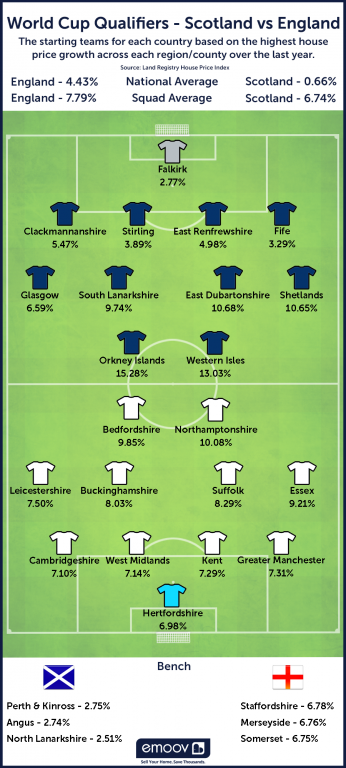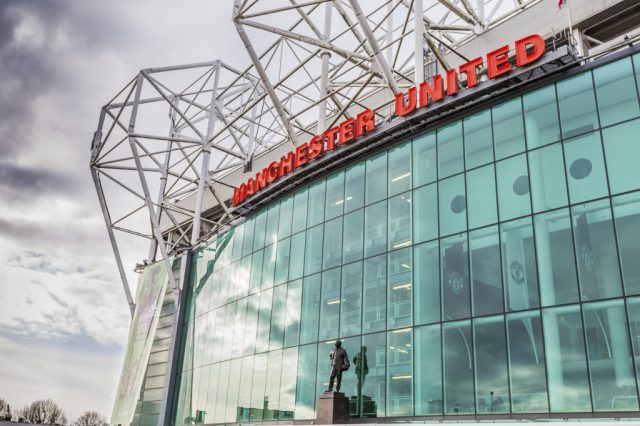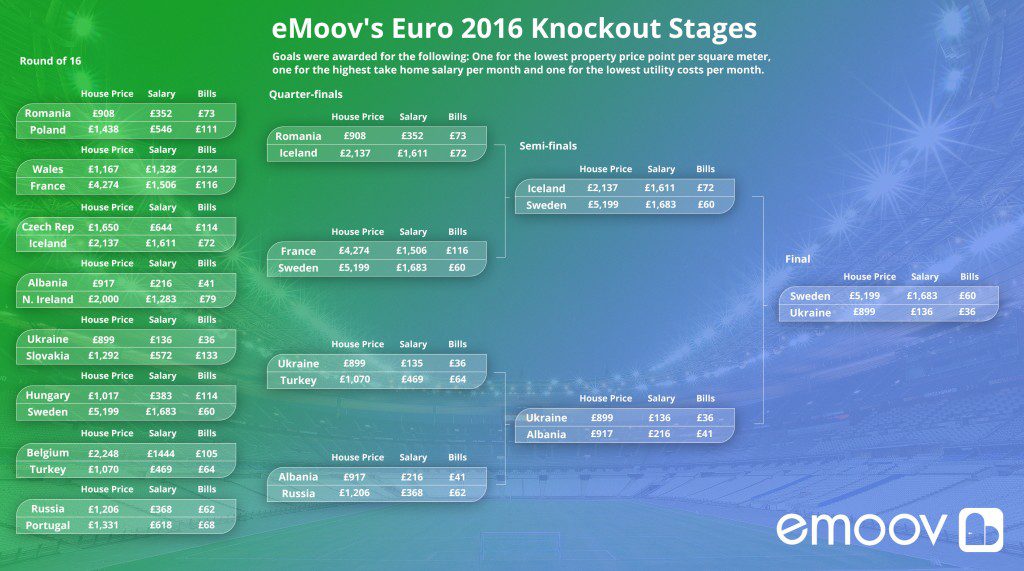The Premier League of House Price Growth
With the Premier League returning this weekend and turning 25 next Tuesday, online estate agent eMoov.co.uk has ranked the teams based on annual house price growth in their local area.
The alternative league tables also look at how some of the biggest footballing rivalries match up head-to-head where the property market is concerned.
The last 25 years
Over the past 25 years, the average UK house price has soared by 302%.
Across the 20 teams in the Premier League this year, the average house price stands at £272,447, having risen by 4.55% since the last season.
Although homes in Premier League locations cost over £50,000 more than the UK average (£220,713), the higher price of property means that growth rates are marginally trailing the UK over the last year (4.67%).
Premier League table
When looking at this year’s 20 Premier League teams where house price growth is concerned, it’s Manchester United that returns to its former glory, with the highest increase in the league, at 8.58%, and an average property value of £262,997.
Although Burnley struggled to stay up after promotion last year, the Lancashire team is flying high where house price growth is concerned. The team lost out to the top spot by the smallest of margins, with prices having risen by 8.57% in the last year. Despite this, Burnley is home to the most affordable property value in the league, at just £77,525.
The North West also takes third place in the league, with Manchester City seeing prices climb by 8.08%. Leicester flies the flag for the East Midlands, with an increase of 7.76%, and newly promoted Brighton performs well, as the best team in the south, after prices rose by 7.12% annually.

The Premier League of House Price Growth
Coincidentally, the two teams to open the footballing season in last week’s charity shield are also home to the lowest rate of price growth. A tough year for the London property market means that Chelsea and Arsenal are the only two teams to see annual house price growth slump below 1% (0.40%), with Newcastle heading straight back down into the third relegation spot (1.39%).
Footballing rivalries
Arsenal vs. Tottenham
Despite Arsenal seeing the lowest level of price growth in the Premier League, its rival Tottenham has seen prices rise by 4.5% in the past year.
But with its temporary move to Wembley this year, it could be a different story at the end of the season, with Brent – home of Wembley Stadium – having seen growth of just 0.90% annually.
Elsewhere in London, West Ham’s new home at the London Stadium means that it’s enjoyed the second highest rate of growth of all the teams from the capital, at 4.11%.
Crystal Palace vs. Brighton
Crystal Palace has also enjoyed better growth than both Chelsea and Arsenal (3.46%), however, Brighton’s promotion revives one of the stranger footballing rivalries, and the Seagulls come out on top, with prices growing more than double that of Crystal Palace in the past year (7.12%).
Man United vs. Liverpool
As already stated, although Man City is home to the cheaper average house price (£161,611) in the Manchester derby, United enjoys the higher rate of growth (8.58% to City’s 8.08%) – enough to also beat bitter rival Liverpool, where annual growth stands at just 3.55%.
South Coast
Bournemouth and Southampton will face off in the Premier League again this season, having drawn in their last encounter. It’s a fairly close run where house price is concerned too, with Bournemouth edging it at 5.26%, to Southampton’s 4.18%.
But, despite their fall from footballing grace, it’s Southampton’s traditional rival Portsmouth that has enjoyed the best performance in property terms, with prices up by 7.40% in the last year.
Newcastle vs. Sunderland
There was no Tyne-Wear derby last season, after Newcastle’s relegation to the Championship the season before. But, despite the Magpies winning promotion back to the top flight, the Black Cats were woeful last season and, as a result, will be applying their trade in the Championship this coming season.
House price growth in the two areas mirrors their respective performances, with Newcastle seeing prices creep up by 1.39%, while Sunderland has seen values drop by 3.30% year-on-year.
Burnley vs. Blackburn
Despite their fall to League One, Blackburn is still on top of Premier League rival Burnley, with prices up by a huge 11.47% in the last year, to Burnley’s 8.57%.
Cardiff vs. Swansea
Although a league separates the two in footballing terms, Cardiff outperforms Swansea in the Welsh derby for property price growth, with prices up by 5.80%, compared to 4.46% in Swansea.
Oxford vs. Swindon
Again, one league currently separates old-time rivals Oxford and Swindon, and, despite a price tag of £414,659 – nearly double that of Swindon’s £210,052 – Oxford comes out on top in both football and property terms, with prices up by 6.40% annually, to Swindon’s 6.05%.
The Founder and CEO of eMoov.co.uk, Russell Quirk, comments on the alternative Premier League: “Although it’s unlikely the table will look like this at the end of the season, it does demonstrate that, while there are pockets of the UK currently seeing a decline in price growth, there are also areas all over the nation enjoying very healthy increases in values.
“It’s also interesting to see how rival areas are performing differently, particularly those in close proximity to each other. Although neighbours, Liverpool and Manchester are seeing different rates of growth, the higher-end London clubs have seen prices stall whilst the capital’s peripheral teams are doing well, and Newcastle and Sunderland are seeing opposite fortunes in price growth terms.”
How is your team’s property market performing?







